Why a GIA Diamond Grading Report is a Must-Have
Everything you need to know about this crucial step of purchasing jewelry, straight from the experts at GIA.
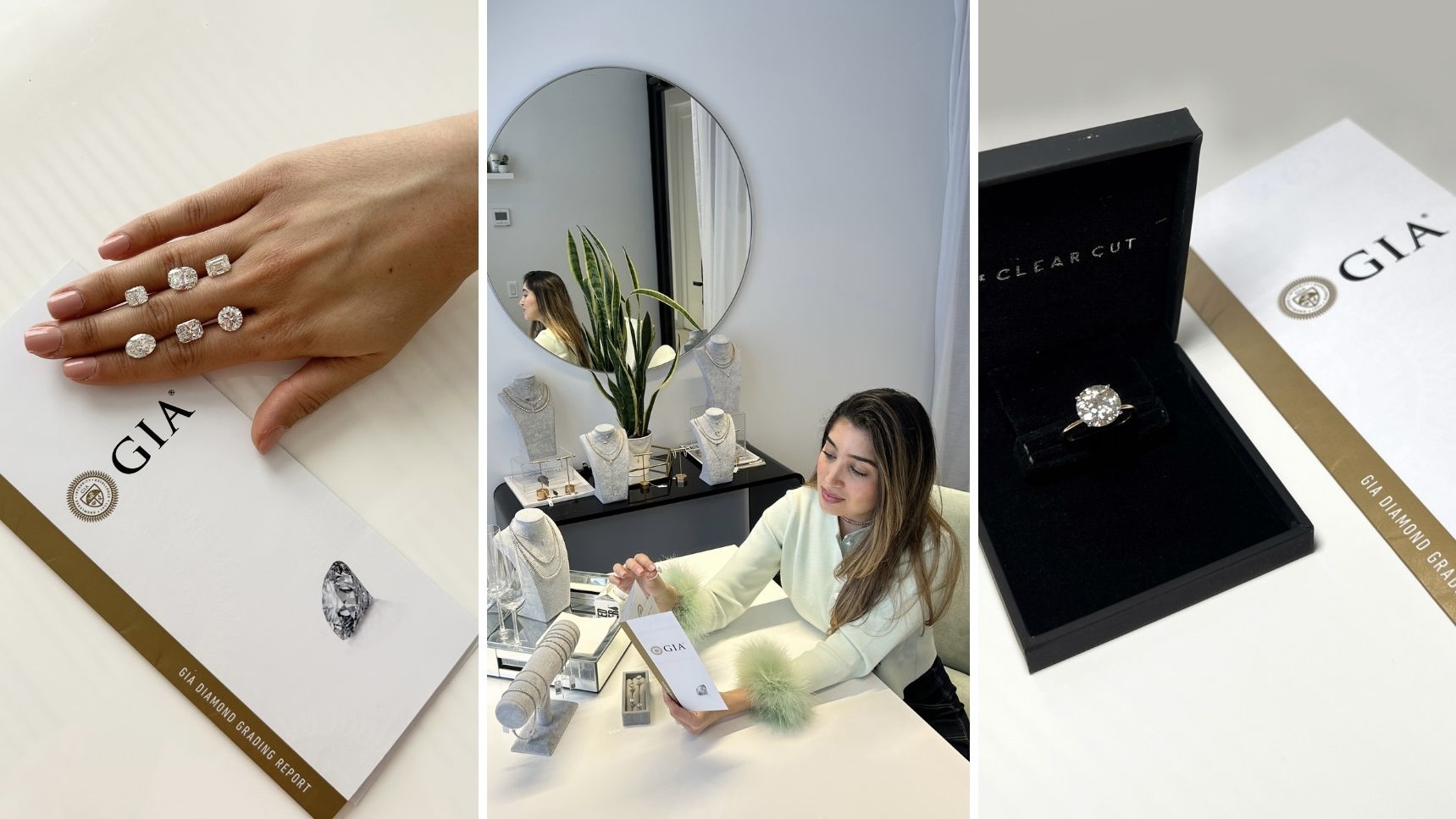
I encountered my first hard copy of a GIA (Gemological Institute of America) Diamond Grading Report when I bought my first piece of serious jewelry, a natural diamond pinky ring with three rows of graduated stones set in a lavish spiral of yellow gold. Like many stories that begin with diamond rings, this was a story of love—self-love. After going through a brutal breakup while working at a major wedding publication, I decided to splurge on the ring I’d coveted for months. “I can buy my own diamonds!” I declared to my empty East Village apartment as I clicked “add to cart.” It was my Elizabeth Taylor moment, if ever so slightly less elegant. It was also the start of something new and wonderful.
When the ring arrived, I felt a surge of pride taking it out of the little velvet box and slipping it onto my pinky. After all, this was a symbol of commitment to my very long and complicated relationship with myself. I even wrote myself an encouraging gift message—a truly romantic gesture. After spending an inordinate amount of time marveling at the new bit of sparkle on my hand, I noticed another piece of paper in a plastic sleeve, a GIA Diamond Grading Report. I’d worked as a jewelry editor for years and knew what a GIA Grading Report was—GIA quite literally invented the 4Cs of Diamond Quality I’d written about time and time again—but having my very own comprehensive description of the diamonds in my ring was a new experience. While the diamond pinky ring was a symbol of self-love, the GIA report was physical proof that the natural diamonds now adorning my finger were the same ones described when I purchased the ring.
Whether you’re contemplating your first natural diamond, shopping for an engagement ring or adding to your collection, a GIA Diamond Grading Report plays a vital role in ensuring you can feel confident in purchase (translation: you get what you paid for). Why is this report so important? It verifies your diamond’s characteristics, so you know exactly what you’re buying.
To get more information about the importance of this sometimes overlooked—but no less crucial—step of purchasing jewelry, I went straight to the source, speaking to a variety of experts at GIA as well as industry veterans. Below, a complete guide to GIA Diamond Grading Reports: how to read them, why they are important and how they verify the quality of your natural diamond purchase.
Why GIA?
Two words: Expertise and trust. Established in 1931, the Gemological Institute of America (GIA) is the world’s foremost authority on diamonds, colored stones, and pearls. GIA’s Diamond Grading Reports have a long history rooted in GIA’s legacy as the leading source of knowledge, standards and education in gems and jewelry. (The organization is also led by Susan Jacques, an industry legend and female CEO—a fact I always admired.) Now recognized all over the world, GIA’s gemological reports started as classroom worksheets for GIA students learning to evaluate diamonds based on GIA’s 4Cs of Diamond Quality (cut, color, clarity, and carat weight). In the 1950s, GIA created the globally recognized International Diamond Grading System ™ used today. “You can think of this as everyone speaking the same language when it comes to diamonds,” says Nellie Barnett, GIA Manager of Corporate Communications, GIA Graduate Diamonds and GIA Applied Jewelry Professional.
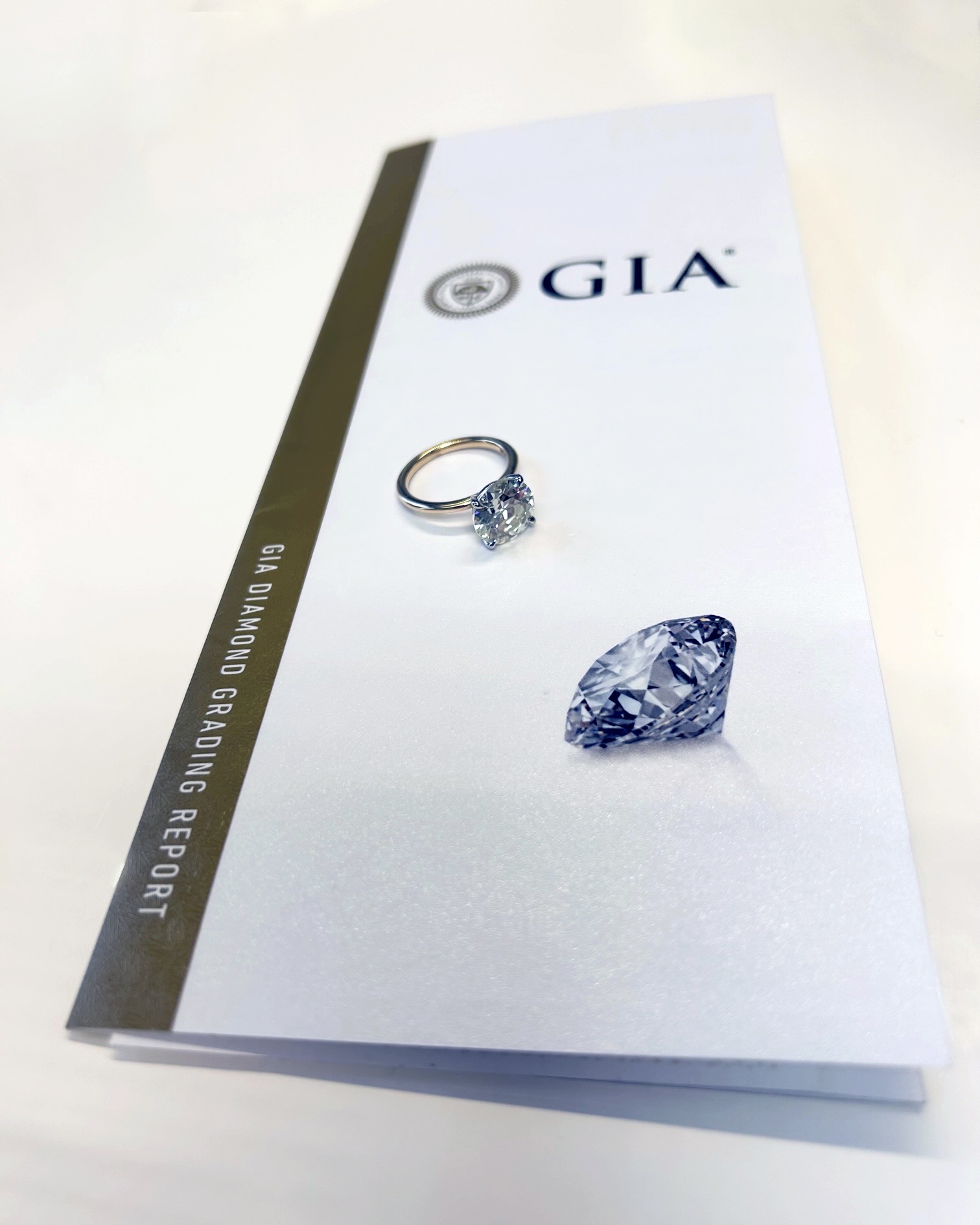
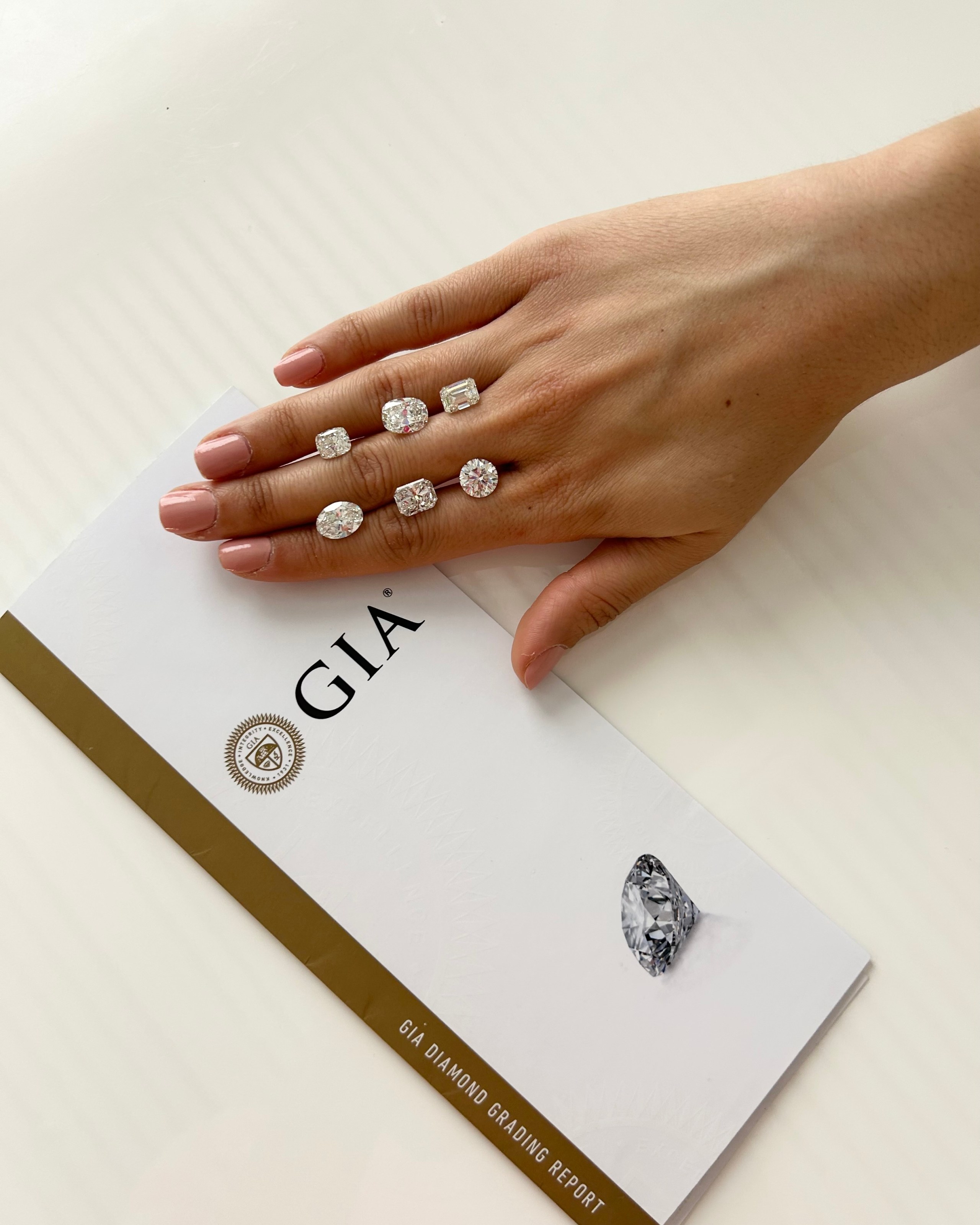
GIA issued the first diamond grading report in 1953. “These reports have become the international jewelry industry’s benchmark for providing consumers and the trade with comprehensive and unbiased assessments of a diamond’s quality. It’s a testament to how GIA’s research is engrained in the services offered to clients and the education shared with the trade and consumers,” adds Barnett.
Jewelry influencer and industry veteran Julia Hackman Chafe (also known on Instagram and TikTok as Jewels With Jules) agrees. Chafe’s father, Afshin “Alan” Hackman, owns Intercolor USA, a 44-year-old importer of precious gemstones. She grew up surrounded by diamonds—and their accompanying GIA reports. “There are many labs that need to be explained to the consumer, but GIA is not one of them,” she says. “Everyone within and outside of the jewelry industry knows exactly what GIA is and their reputation. Often, that GIA report is what helps to sell a stone.”
What is a GIA report?
A GIA Diamond Grading Report is a comprehensive document that outlines the characteristics and quality of a diamond assessed by expert gemologists at GIA. It’s also worth noting GIA issues the Diamond Grading Report for loose natural diamonds only, weighing 0.15 carats or more. “Think of it like your diamond’s passport–it provides essential information about your gem’s characteristics, ensuring you know exactly what you’re getting,” says GIA Director of Market Development Rebecca Boyajian-Pecnik, GIA Graduate Gemologist and AGS Credentialed Jeweler. Given that GIA is a non-profit institution, a GIA report serves as an unbiased evaluation of a diamond’s attributes, including its cut, color, clarity, and carat weight. “Whether you’re buying or selling diamonds, having a GIA report adds peace of mind to your transaction. Plus, it’s a valuable tool for insurance purposes, helping protect your jewelry purchase for years to come,” she says.
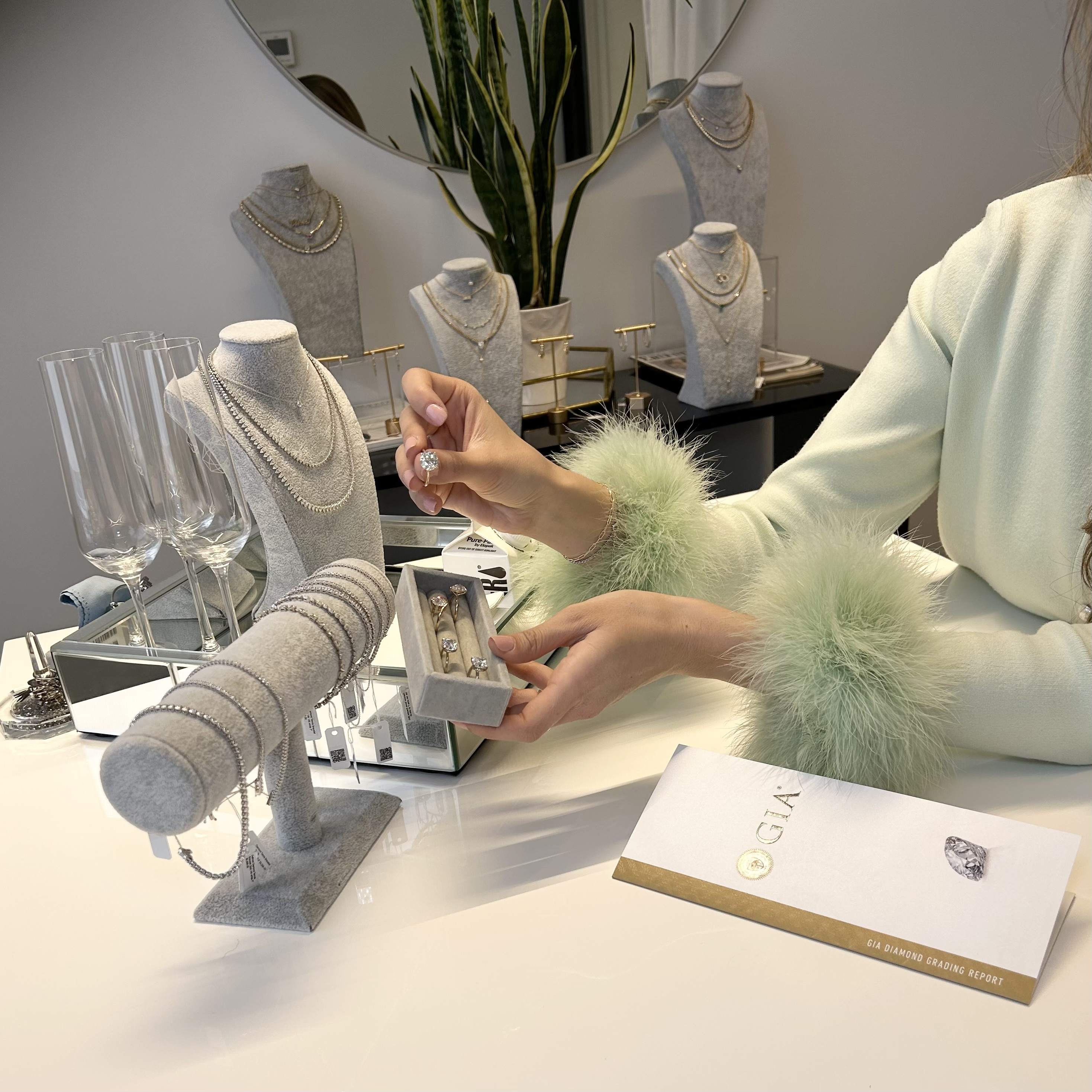
How to read a GIA report:
Reading a GIA Diamond Grading Report is easier than you might think. It can even be fun, if you think of it as a simplified way of looking beyond the sparkly surface of your stone. No two natural diamonds are the same—one of the qualities that makes them so precious and rare—and your GIA report provides an in-depth view of the one-of-a-kind aspects the naked eye may not see. “It’s like unlocking the secrets of your diamond,” Boyajian-Pecnik says. “The report includes detailed information about the diamond’s quality using GIA’s 4Cs, presented in a clear and easy-to-understand format.” You’ll also find diagrams and descriptions to help you visualize your diamond’s unique characteristics, such as a plotted diagram and a graphic representation of its proportions.
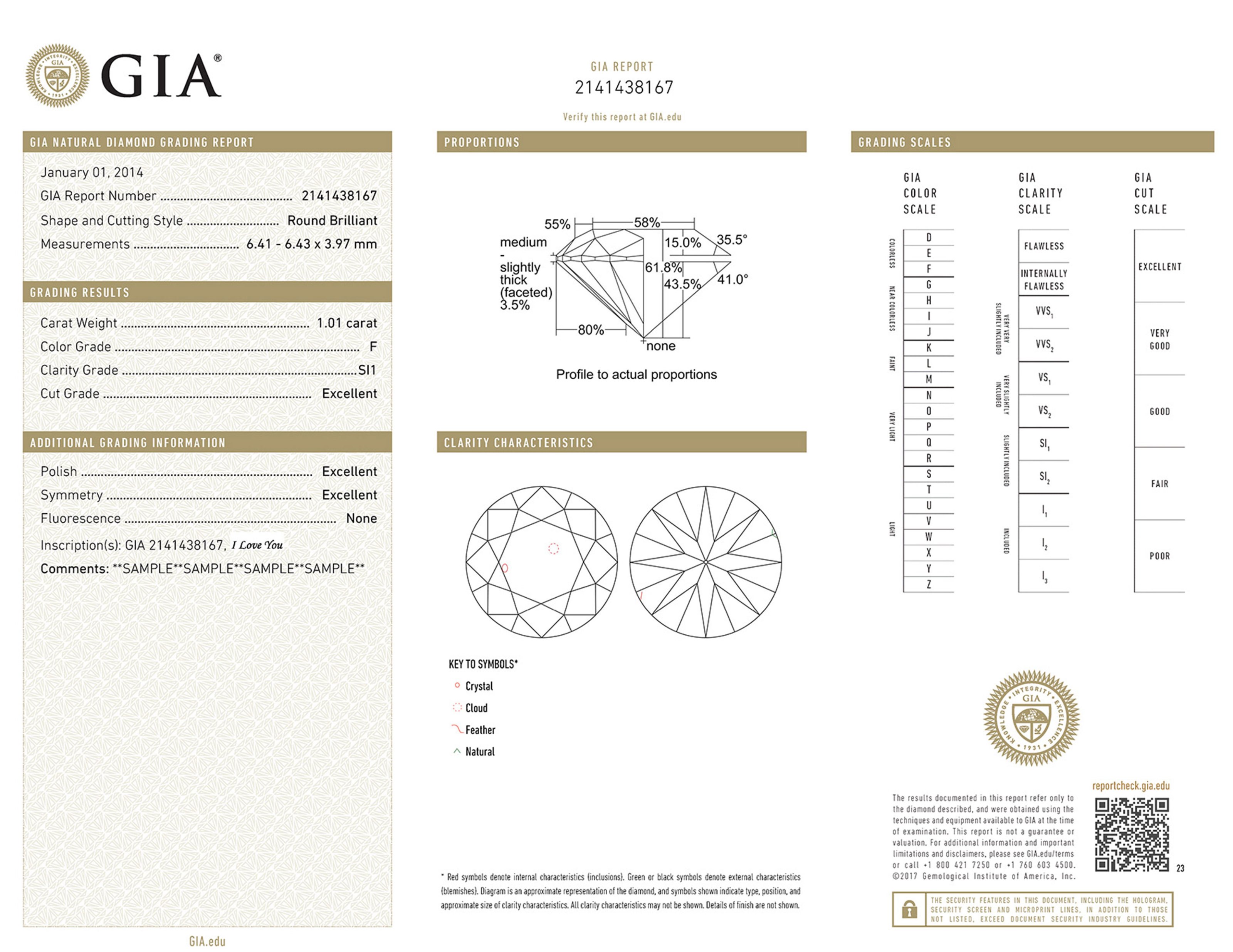
Pro tip: If you need more help reading the report, there are tools available on GIA.edu.
Is a GIA Report the same as an appraisal?
While GIA does not offer appraisal services, a GIA Diamond Grading Report and an appraisal complement each other. “A GIA grading report focuses on assessing the quality and characteristics of a diamond, providing an objective evaluation based on GIA standards and scientific criteria. On the other hand, an appraisal determines the monetary value of the diamond for insurance or resale purposes,” Boyajian-Pecnik says. Together, they offer comprehensive information and protection for your investment.
Does a GIA Diamond Grading Report add value to my natural diamond purchase?
While a GIA report does not add value to your natural diamond purchase, it does evaluate your stone’s quality in an unbiased way. “A GIA Grading Report provides an independent and unbiased assessment of your diamond. It gives you confidence in the diamond’s authenticity and helps you make informed decisions about its value and potential,” Boyajian-Pecnik says.
A GIA Grading Report provides an invaluable sense of security, according to Chafe. “Since natural diamonds are a meaningful purchase, they’re often also a difficult-to-make purchase,” she says. “GIA reports provide an extra level of protection and trust so that you know exactly what you’re receiving. That extra level of protection is priceless.”

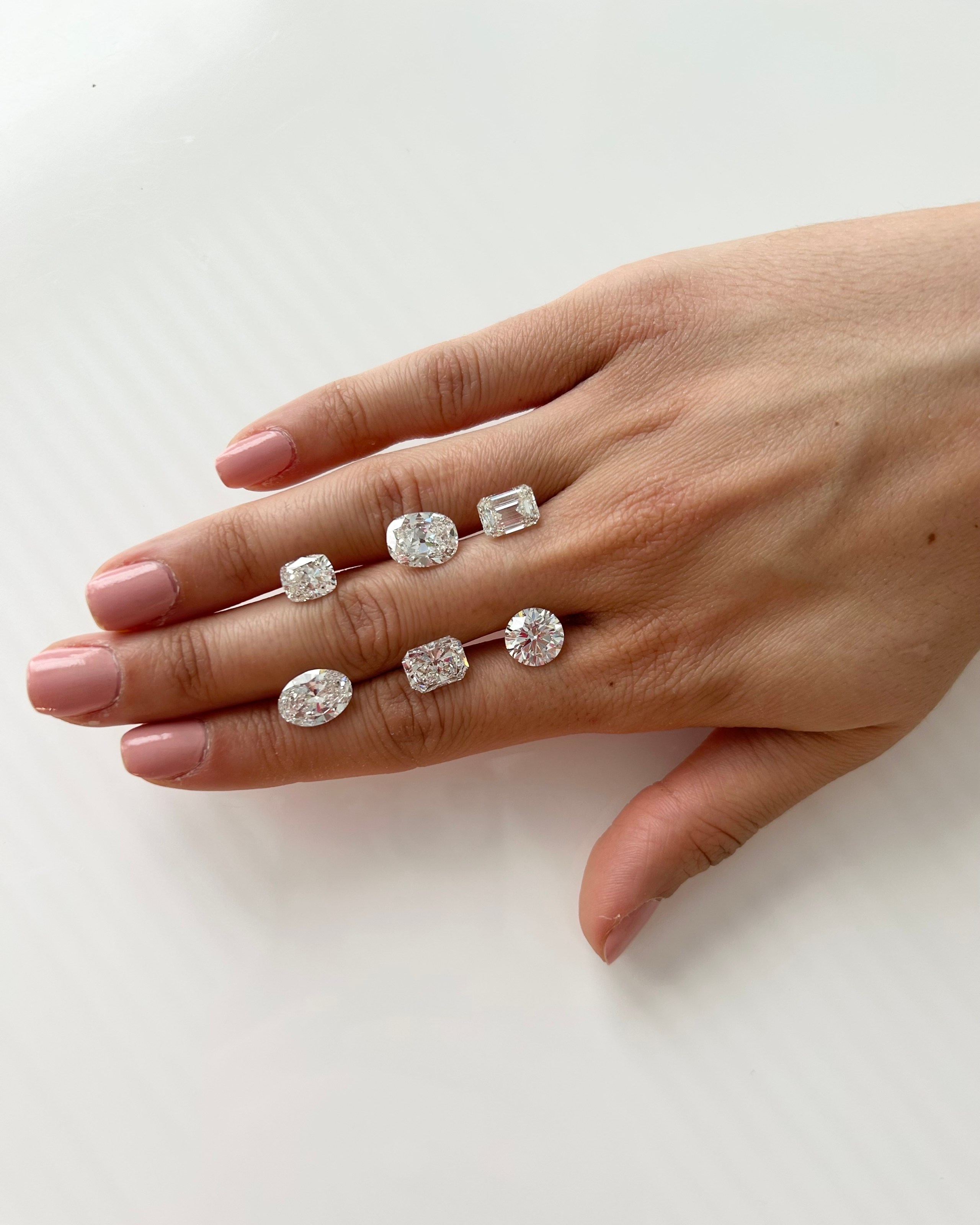
Why retailers trust GIA Grading Reports:
GIA Grading Reports aren’t just important to consumers, they also provide value to retailers by ensuring transparency and trust in the jewelry they’re selling. Oliva Landau, co-founder and CEO of The Clear Cut and GIA graduate gemologist, exclusively uses GIA Grading Reports. (Not only was Landau educated at GIA, she also happened to meet her now husband, co-founder and COO, Kyle Simon there.) Sentimental reasons notwithstanding, Landau says she trusts GIA Grading Reports because they are the ultimate source of truth about a stone’s characteristics. “GIA is the foremost authority, and it has the strictest standards,” she says. “It’s a way that we can guarantee to our clients that the quality of the diamond they are purchasing is what it is because it comes from GIA.”
Landau also warns against the potential consequences of foregoing a GIA Grading Report. “If you don’t have a Grading Report, then you can’t be one hundred percent certain of the quality of your purchase,” she says. “It should disclose every single treatment that’s done to your stone (if there are any), whether it’s natural or lab grown, as well as the quality and if there are inclusions. There’s no real guarantee that you’re paying a fair price if you don’t have a GIA report.”


How much does a GIA Grading Report cost?
If you’re purchasing from a jeweler who provides GIA Grading Reports, it won’t cost you extra. However, if you are looking to have a diamond graded by GIA, the cost can vary depending on several factors, including the specific services ordered and the size of the diamond. According to Barnett, GIA Grading Reports typically start from a certain base fee of around $48 for a 0.15 to 0.22 carat diamond, whereas a one carat diamond would cost around $113. The Diamond Grading Report includes a 4Cs assessment, plotted clarity and proportions. A GIA report number laser inscription is available at an additional charge. For more information on fees applicable to your specific stone, visit GIA.edu.
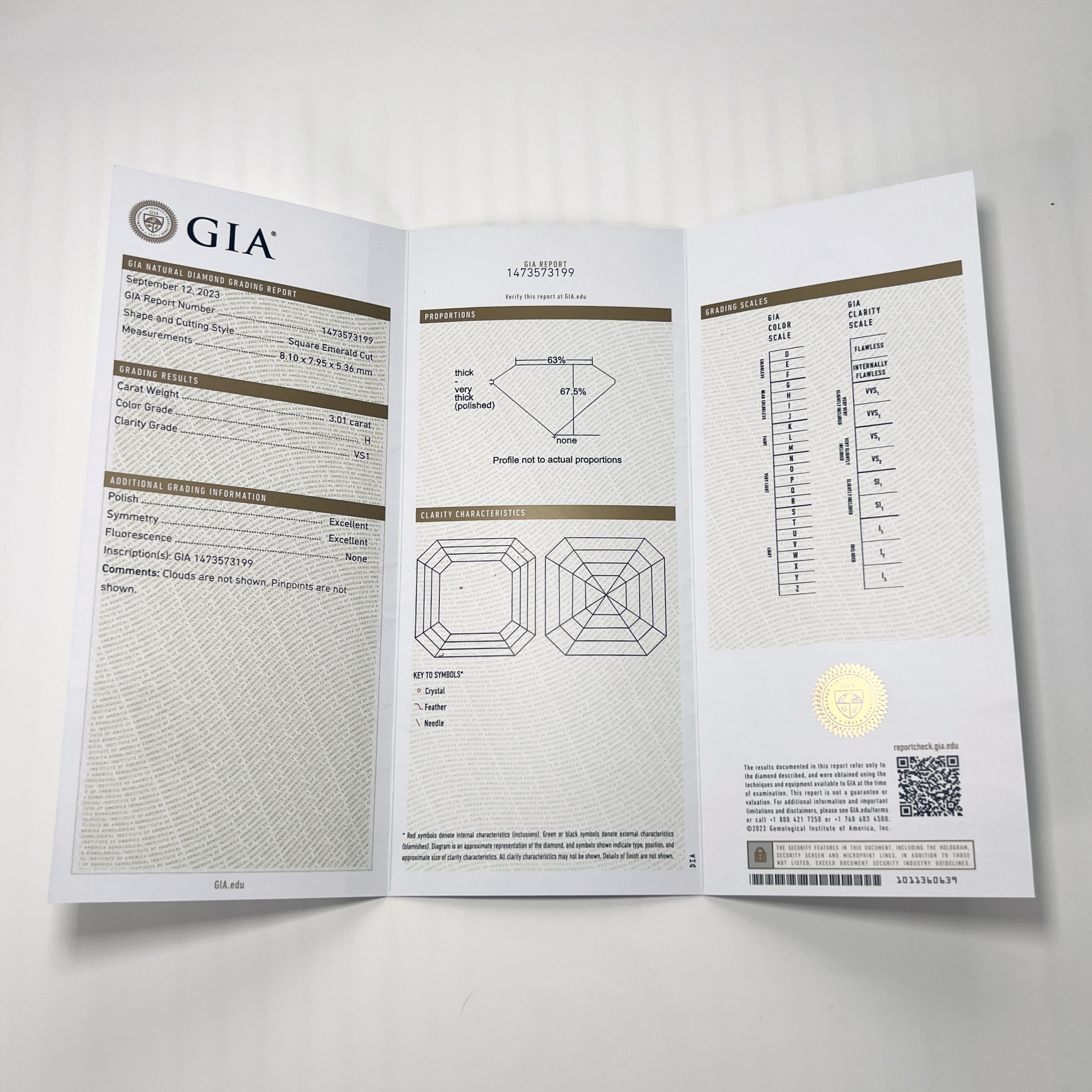
Some years after wearing my beloved pinky ring almost every day, I received another very important piece of jewelry on a rainy winter night in New York City; an engagement ring with a beautiful Asscher-cut natural diamond center stone. Once again, I pored over the GIA Grading Report as soon as it was in my hands. I learned so much about the stone that would undoubtedly become a family heirloom, from the characteristics that make it unique, to how it measures up against the 4C’s and even whether it glows in UV light. While this ring was the promise of another new chapter about to unfold, the GIA Grading Report was unbiased proof of what was already established: My natural diamond was as real and authentic as my relationship with myself.
To learn more about GIA Grading Reports, visit GIA.edu.



